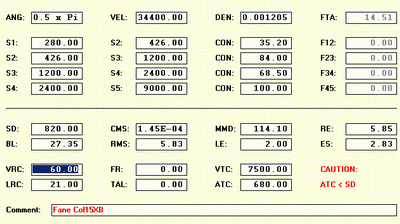In planning for the construction of my new horn sub, I modeled and built this smaller version which uses two 10" drivers. The drivers are Australian made by Etone, in Sydney. They are a robust 10" with a doped paper cone, 50mm voice coil, large magnet, spider and cast frame. These were the drivers used in my first real subwoofer, around 15 years ago. This smaller horn subwoofer is much easier to construct than it's 18" big brother because it has no cuts that are beyond the 800mm fence limit of my tablesaw. Total construction time was only around 4 hours. The big basshorn has angled cuts on the ends of 1200mm long pieces of timber. This will slow down construction quite a bit. Moving the big sub around on the workshop floor will also be quite a bit more difficult.
The Specs for the horn are:
| Drivers | 2x Etone 135 |
| Throat area | 280cm^2 |
| Mouth area | 2400cm^2 |
| Path Length | 2M |
| Rear Chamber Volume | 28 liters |
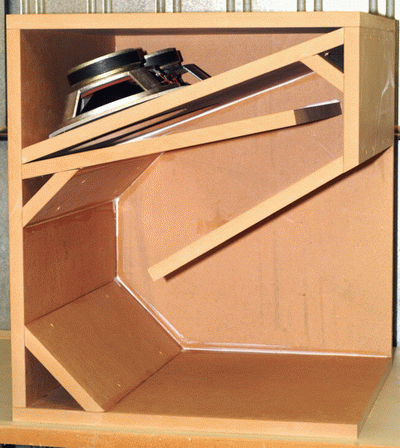
The predicted and measured performance of my bass horn is very good, with a good low frequency cutoff, for the size, and a smoothly rolled off top end. Sensitivity is around 108dB/2.83V/1M, or about 105dB/W/M.
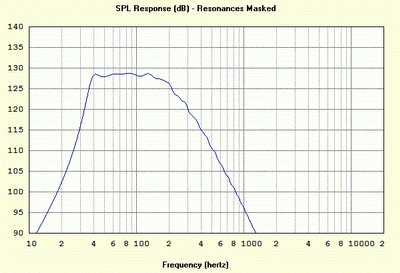
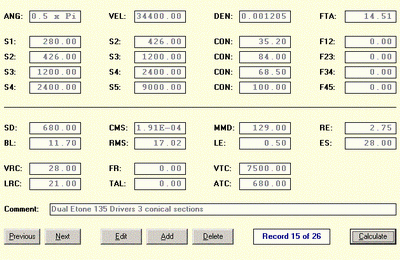
The horn fires into the corner at 45degrees with the horn mouth touching the two walls, creating a triangle in the corner between the top of the box and the corner itself. Firing the horn at the corner at 90 degrees raises the LF cutoff by some 5Hz, with an optimal spacing (around 300mm).
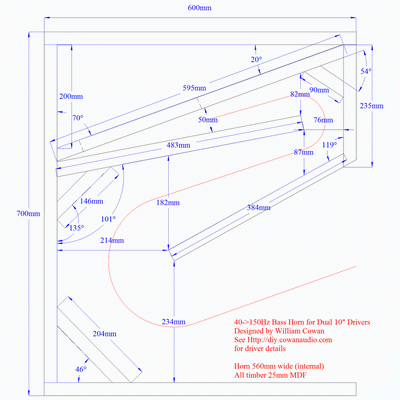
I have modeled this horn with a number of different 10" drivers, and indeed some 15"s, and it appears to be quite insensitive of the driver used. If you have some drivers of interest, plug the specs into McBean's Hornresponse program and see how they model. I have given you the input parameters for this horn, if you are too lazy to enter the numbers for your driver to see if it will work properly, don't email me, I'm too busy to do it for you. (This may appear a little strange but I'm amazed by the number of emails I recieve that say something like" I'm too lazy to do this myself, can you do it for me?") Chassis depth may be an issue when using a 15" driver instead of the dual 10"s, but since the 15" drivers often need more back chamber volume, the top can be raised to solve both problems.
Here is a predicted response plot of this horn with the Fane Collosus 15XB. A change has been made to the rear chamber to fit the driver. The lid has been raised 100mm. This increases the rear chamber volume to around 60 liters, which appears about perfect for the Fane driver. Sensitivity is just over 106dB/2.83V/1M. Like the dual 10" version of this sub, I'd expect extension in room to be quite a bit better than predicted and should be flat to around 30Hz.
At it's rated input power, the Fane driver should be able to crank out around 134dB. Above 40Hz it's peak excursion is only around 7mm, at this power level. A pair of these in a domestic setting should be just about enough for anyone. ;-)
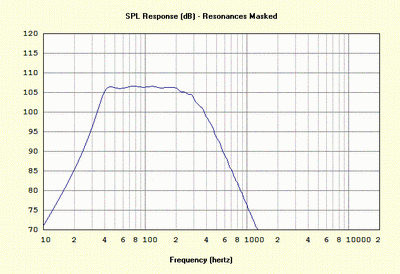
Here are the input parameters I used for the Fane simulation. Le is unknown, but since it only has a small effect on the top end of the response curve, the correct value is not needed.
Quite a few people have already built this little horn. If anyone wants to send me some photos of their version of my horn, I'd be more than happy to put them up on my site for the world to enjoy.
